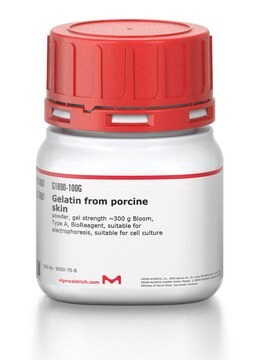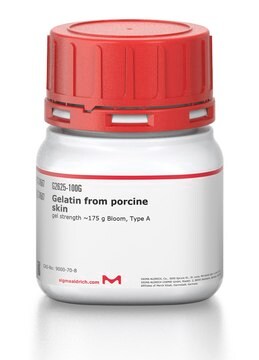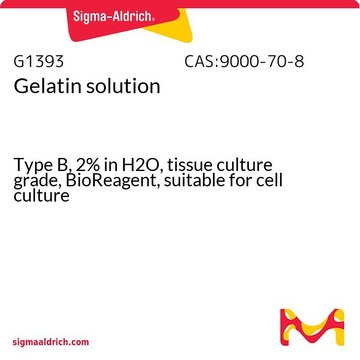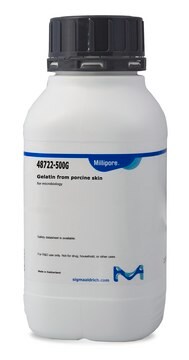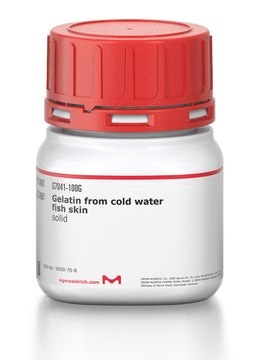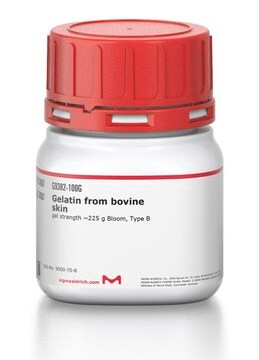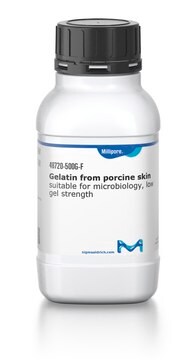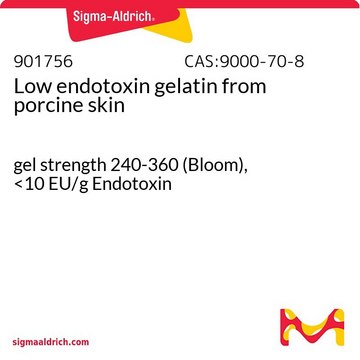G2500
Gelatina from porcine skin
gel strength 300, Type A
About This Item
Productos recomendados
origen biológico
Porcine skin
Nivel de calidad
tpo
Type A
Análisis
70-90% (biuret)
formulario
powder
técnicas
cell culture | mammalian: suitable
fuerza de gel
~300 g Bloom
solubilidad
H2O: soluble 50 mg/mL
¿Está buscando productos similares? Visita Guía de comparación de productos
Descripción general
Aplicación
- for coating glass-bottomed plates for culturing A375 cells and in gelatin degradation assay
- for coating glass slides in the histological studies with brain sections
- in the synthesis of gelatin methacrylate (GelMA) prepolymer for encapsulating cells on to 3D printed hydrogels
- to prepare thiol-functionalized gelatin (GelSH) hydrogel for 3D projection bioprinting
Acciones bioquímicas o fisiológicas
Componentes
Precaución
Nota de preparación
Código de clase de almacenamiento
11 - Combustible Solids
Clase de riesgo para el agua (WGK)
nwg
Punto de inflamabilidad (°F)
Not applicable
Punto de inflamabilidad (°C)
Not applicable
Equipo de protección personal
Eyeshields, Gloves, type N95 (US)
Certificados de análisis (COA)
Busque Certificados de análisis (COA) introduciendo el número de lote del producto. Los números de lote se encuentran en la etiqueta del producto después de las palabras «Lot» o «Batch»
¿Ya tiene este producto?
Encuentre la documentación para los productos que ha comprado recientemente en la Biblioteca de documentos.
Los clientes también vieron
Artículos
Photo-Crosslinkable Gelatin Hydrogel: Versatile Materials for (High Resolution) Additive Manufacturing
Papain is a cysteine protease of the peptidase C1 family. Papain consists of a single polypeptide chain with three disulfide bridges and a sulfhydryl group necessary for activity of the enzyme.
Nuestro equipo de científicos tiene experiencia en todas las áreas de investigación: Ciencias de la vida, Ciencia de los materiales, Síntesis química, Cromatografía, Analítica y muchas otras.
Póngase en contacto con el Servicio técnico